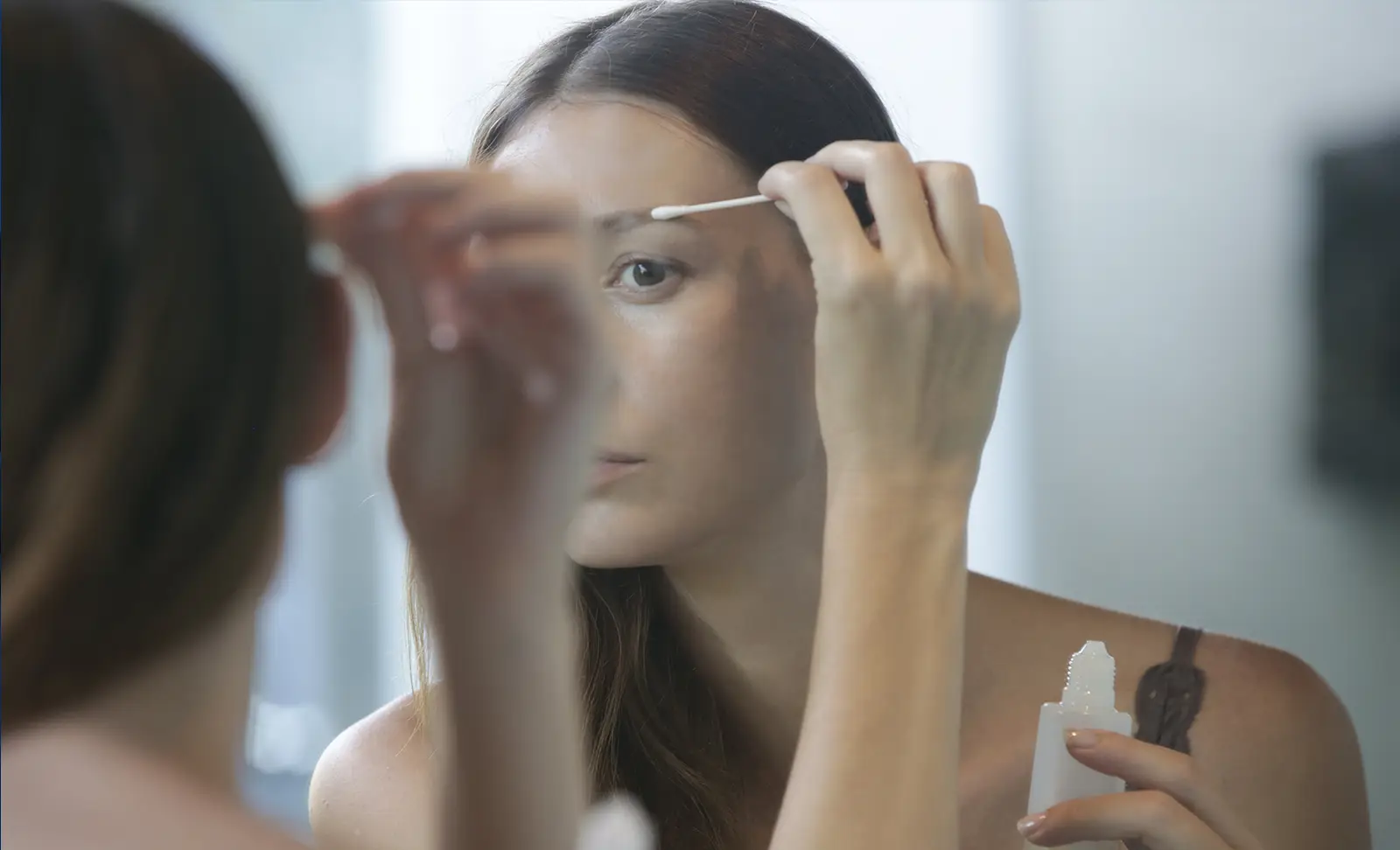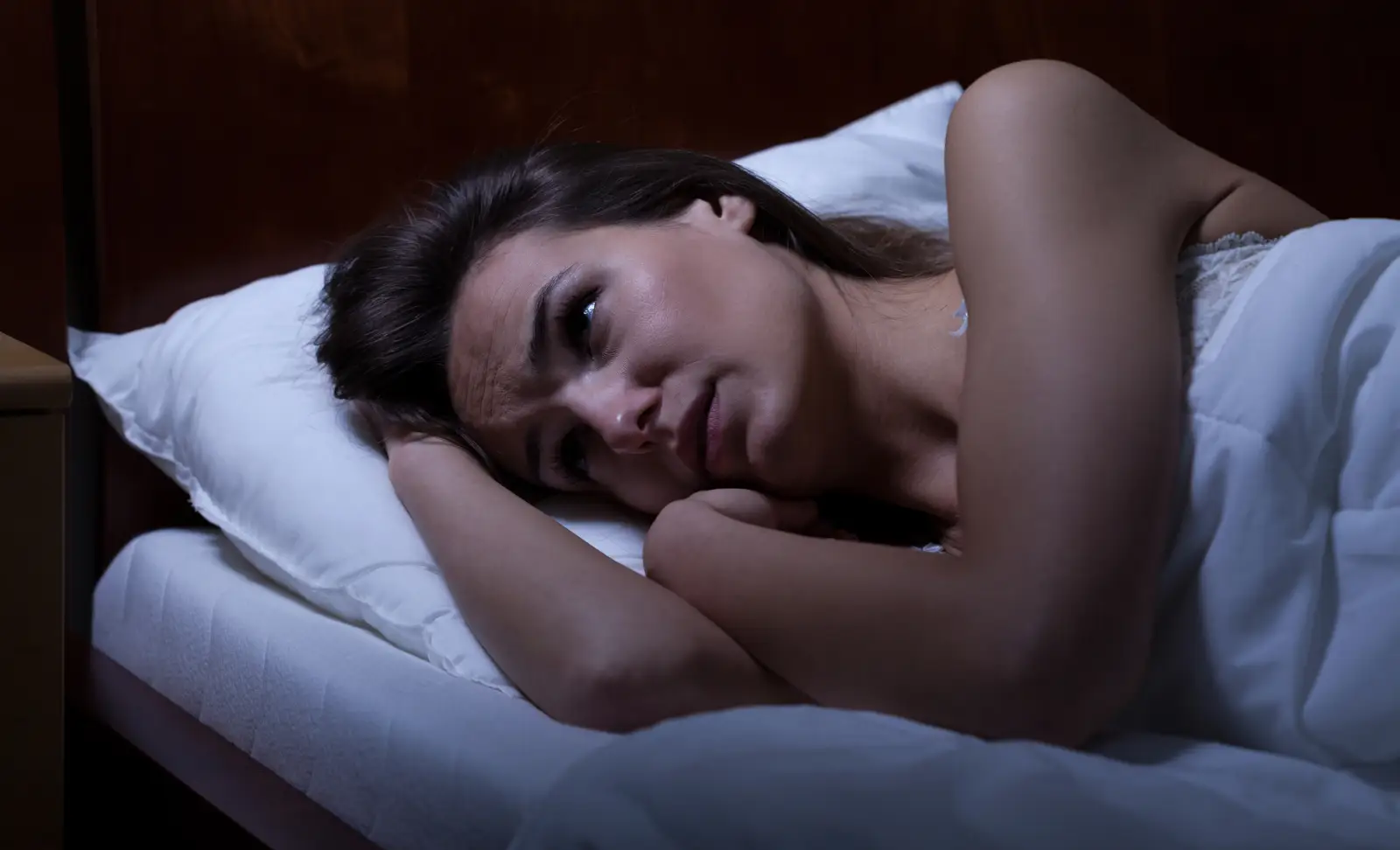
Some people notice they lose hair in their late teens and early 20s, while others keep a full head of healthy hair right into middle age and throughout their golden years. Plus, some people never suffer from hair loss; it all depends on genetics, health, lifestyle, and age.
One of the biggest risk factors of balding is age, with the most common type of hair loss being androgenetic alopecia (pattern baldness), affecting about 50% of men over the age of 50 and approximately 40% of women aged over 70.
Whether you’re wondering how to stop balding now or in the future, the following guide details everything you need to know about hair loss, from the early signs of balding and the causes to the various treatment options available today.
First signs of balding
The first signs of balding can appear at any stage of an adult’s life. Although losing between 50 and 100 strands of hair daily is considered “normal” hair loss, certain non-natural factors can influence hair loss further. These include using chemicals on the hair (dye and bleach, for example) and styling the hair using heat, such as hair dryers and straighteners. However, other reasons for hair loss may include health conditions and age.
Whatever the case, the earlier you spot the first signs of balding, the sooner you can consult with a specialist to find solutions and tackle the problem at its root – either with medical intervention, lifestyle changes, medication, or other treatments. With that in mind, the following are five first signs of balding to look out for:
Receding Hairline
Some people develop a receding hairline towards the end of puberty, resulting in significant hair loss by the time they reach their late 20s and early 30s.
In men, the hairline first recedes just above the temples, where the natural hairline retreats slowly with age – a common condition known as male pattern baldness. As hair gradually falls out, a “V” or “M” shape hairline appears above the forehead, while the sides of the head may remain unaffected.
Women can also experience a receding hairline, although it’s much rarer. Hormonal changes, like menopause and pregnancy, can affect the hairline, leading to hair loss that may be temporary until hormones balance out again. In some cases, however, the change can be permanent.
Thinning Hair
Hair thinning means a gradual change in the density and texture of hair. Normally, it begins at the temple or crown, and as time goes by, less hair grows back, leaving shorter, sparser-looking hair. Hair thinning can also occur on the entire scalp, which is often a slow process taking place over several years until the baldness becomes noticeable.
Lifestyle factors can lead to thinning hair, such as severe stress, vitamin and mineral deficiencies, and excessive hair treatments containing harsh chemicals. Your genes may also influence hair thinning, particularly if the problem occurs in other family members.
In contrast, certain medical conditions may result in thinner hair, such as a hormonal disorder or an autoimmune disease. Whatever the issue, worrying about how to stop going bald without acting upon it will only cause further stress – seeing a doctor is the best course of action to determine why hair is thinning and what you can do about it.
Bald Spots
Bald spots on your scalp could mean you’ve developed alopecia areata – an autoimmune condition that causes the immune system to attack hair follicles, which reduces their growth phase and causes hair to fall out.
Alopecia areata can affect the hair on your head as well as body hair, including the eyelashes, eyebrows, facial hair, and pubic hair. Alopecia tends to form circular spots of baldness on the scalp, which may feel tingly or itchy. There are also several types of alopecia, each requiring unique treatments, which is why you must see your doctor for an official diagnosis if you notice the first signs of balding anywhere on your body.
Hair Falling Out in Clumps
As mentioned, daily hair loss is normal. However, finding large clumps on your pillow, hair chunks coming out as you brush or comb, or lumps of hair falling out in the shower or bath may indicate a problem.
If bald spots appear or you’ve noticed hair sections that are easy to pull out when brushing, you must see a doctor. Your doctor will likely run tests for underlying health conditions, hormonal changes, and nutrient deficiencies, as well as examine your scalp for signs of trauma. This issue could also stem from harsh styling practices and chemical treatments, which you should stop undertaking if hair loss is occurring.
Hair Loss All Over the Body
Although not as common as most types of baldness, it’s possible for a person to lose hair all over their body suddenly. A number of health conditions may cause this alarming symptom, including a type of alopecia called alopecia universalis.
Other conditions that may cause all-over-body hair loss include autoimmune disorders, hormonal disorders (especially those concerning the adrenal glands or thyroid), iron deficiencies, stress, diabetes, and genetics. For women, another cause may include polycystic ovary syndrome (PCS).
First signs of balding in women
Baldness is usually associated with men – but that’s a misconception. While balding is more common among the male population, it also affects females of all ages. Female pattern baldness is the term for hair loss occurring in girls and women and can occur in individuals between the ages of 12 and 40. Still, it may start later in life in some cases.
Although there are some exceptions, men and women tend to experience balding differently, including the type of hair loss, where and how quickly it occurs, and the causes. The following are some of the first indications of balding in women:
Widening hair part
A widening part is among the most common early signs of balding in women. The hair’s part usually becomes wider along the centre of the scalp; however, other areas can also be affected.
Thinning on top of the scalp
Usually, women suffering from thinning hair experience hair loss on top of the scalp while the sides remain unaffected. In men, the “V” or “M” shape of hairline recession occurs, but that’s not the case with women; females experiencing hair loss may see bald spots across the whole head.
What causes hair loss?
Now that the signs of hair loss in men and women have been detailed, it’s time to focus on what causes it. For the most part, age and certain health conditions can lead to hair loss – but so can lifestyle-related issues, medication, or even injury.
The potential causes of balding and hair loss include:
- Male and female pattern baldness
- Alopecia areata
- Cicatricial alopecia
- Malnutrition
- Telogen effluvium
- Thyroid issues
- Tinea capitis
How to stop balding?
Sadly, balding cannot be stopped. If it’s hereditary, it will happen, regardless of your lifestyle. However, baldness that occurs due to a health condition or lifestyle factors (such as poor diet or excessive stress) is sometimes reversible – but not always.
What is certain, however, is that the only option for balding and hair thinning is treatment, no matter what kind of baldness it is. Some treatment methods can reverse balding, while others can merely slow it down. In any case, the solution is to speak with a specialist and discover the cause of the balding, receive a diagnosis, and then pursue the right avenues of treatment.
How to cover bald spots and the treatments that are available
If you’re suffering from hair loss, you may be wondering how to stop going bald. Some types of hair loss are temporary and can be treated with lifestyle changes and/or hair loss medication, while others are permanent and may require a more intensive approach to treatment.
Fortunately, no matter the type of hair loss, many treatments have proven to be successful in hair regrowth and restoration. If you or a loved one is wondering how to stop balding or are experiencing sudden hair loss, consider some of the following treatments.
Hair transplant
A hair transplant is a surgical procedure wherein a specialist takes hair grafts from a donor area and transplants them to a bald spot on head, typically resulting from androgenic alopecia. The two main types of hair transplants are FUT and FUE.
The collected donor hairs are genetically resistant to DHT – the male sex hormone that can cause hair follicles to shrink, leading to an inability to grow new strands. Thanks to their resistance to this hormone, the implanted hairs should never fall out, meaning a transplant in this way is a permanent solution to hair loss.
Not everyone is a candidate for a hair transplant, so a consultation beforehand is necessary. During the consult, the specialist will try to determine the cause and severity of the hair loss (if not already known) and see if a transplant is an appropriate option.
Low-level laser therapy
Low-level laser therapy is a fairly new treatment for hair loss. It can deliver results; however, it can take time to see significant changes.
In general, laser treatments focus more on targeting hair density; weak hair cells absorb photons from the laser, boosting the growth of stronger, thicker hair.
Platelet-rich plasma therapy (PRP)
For PRP, a blood sample is taken before being processed into a platelet-rich plasma. This plasma is then injected into areas of hair loss resulting from male pattern baldness, which may lead to new hair growth due to increased blood flow to the scalp.
Topical retinoids
Topical treatments containing retinoids can be applied to the scalp to promote hair growth. What’s more, retinoids may prevent further hair loss by unclogging the pores on the scalp and boosting new skin cell production.
Spironolactone
Spironolactone binds to androgen hormone receptors to regulate testosterone and other common androgens in the body. Therefore, taking this drug can help combat hair loss pertaining to hormone imbalances.
Finasteride
Finasteride is among the most common medications for treating hair loss. This medicine lowers the levels of DHT (again, the male sex hormone responsible for male pattern baldness), potentially resulting in decreased hair loss and regrowth. However, this drug can cause serious side effects in some people, which is why it’s important to speak with a doctor when considering taking it.
Minoxidil
Minoxidil is an over-the-counter medication applied directly to the scalp to prevent hair loss and stimulate hair growth for certain types of hair loss. Again, this drug comes with a possible lengthy side effect list, so it’s best to speak with a doctor before taking it – despite being available without a prescription.
How to cover bald spots
Whether severe or mild, some people prefer to learn how to cover bald spots rather than opting for treatment. However, the first port of call should be to see a doctor to rule out health conditions first.
If you or someone you know is experiencing bald spots or hair thinning but would prefer not to go down the route of hair-boosting medication and procedures, there are ways to hide a bald spot on head and reduce the appearance of hair thinning.
Hair additions, such as clip-in and tie-in hair pieces, wigs, and hair extensions, are excellent solutions. Many of these can be attached to existing hair and blended in to achieve the appearance of a full head of healthy hair.
Another great option (and one that can look super-stylish) is head accessories, including hats, scarves, turbans, and bandanas. Coloured hair sprays are also a fantastic way to hide bald spots and hair thinning; many high-street cosmetic shops and pharmacies sell these hair products in a wide variety of shades to match your hair’s hue.
Get Treatment for Baldness Today
If you’re questioning how to stop going bald and wish to regain a healthy head of hair, you’re not alone. Many people who experience balding and hair thinning – no matter their age – seek solutions to this problem. Thankfully, a number of hair loss treatment options exist, from hair transplants and medication to targeted therapies and lifestyle changes.
If you or a loved one is suffering from hair loss, thinning, or balding and would like to know more about hair transplants, don’t hesitate to contact our friendly team here at Harley Street Hair Clinic today. We can set up a consultation for you and discuss the benefits of a hair transplant and determine if you’re an ideal candidate for the procedure.


